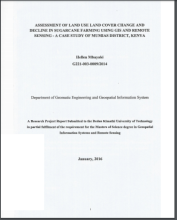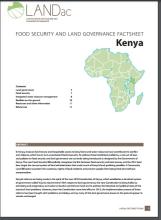Land Library Search
Through our robust search engine, you can search for any item of the over 73,000 highly curated resources in the Land Library.
If you would like to find an overview of what is possible, feel free to peruse the Search Guide.
/ library resources
Showing items 1 through 9 of 11.In this paper, we present an optimized Machine Learning (ML) algorithm for predicting land suitability for crop (sorghum) production, given soil properties information.
While women’s rights to land and property are protected under the Kenyan Constitution of 2010 and in various national statutes, in practice, women remain disadvantaged and discriminated.
Matters of environmental migration are frequently looked at from a humanitarian perspective.1 This policy brief will instead look at it with a lens focusing on land issues. The question of environmental migration is inevitably linked to the question of land for several reasons.
Land use/cover changes are pervasive with no clear understanding of their spatial extends, drivers and impacts to society. Land-use changes have become a key component in the current strategies for managing and monitoring the natural resources and environment changes.
A Bill for AN ACT of Parliament to consolidate the laws relating to energy, to provide for National and County Government functions in relation to energy,to provide for the establishment, powers and functions of the energy sector entities; promotion of renewable energy; exploration, recovery and
In Kenya, insecure land tenure and inequitable access to land, forest and water resources have contributed to conflict and violence, which has in turn exacerbated food insecurity.
Agriculture is the backbone of Kenya’s economy. Agriculture in Kenya is characterized by low productivity due to low external inputs, lack of good farming practices, soil erosion, and other losses.
The first set of the land laws were enacted in 2012 in line with the timelines outlined in the Constitution of Kenya 2010.
In Kenya, insecure land tenure and inequitable access to land and natural resources have contributed to conflict and violence, which has in return exacerbated food insecurity. Most farmers in Kenya have no legal title for the land on which they farm.









